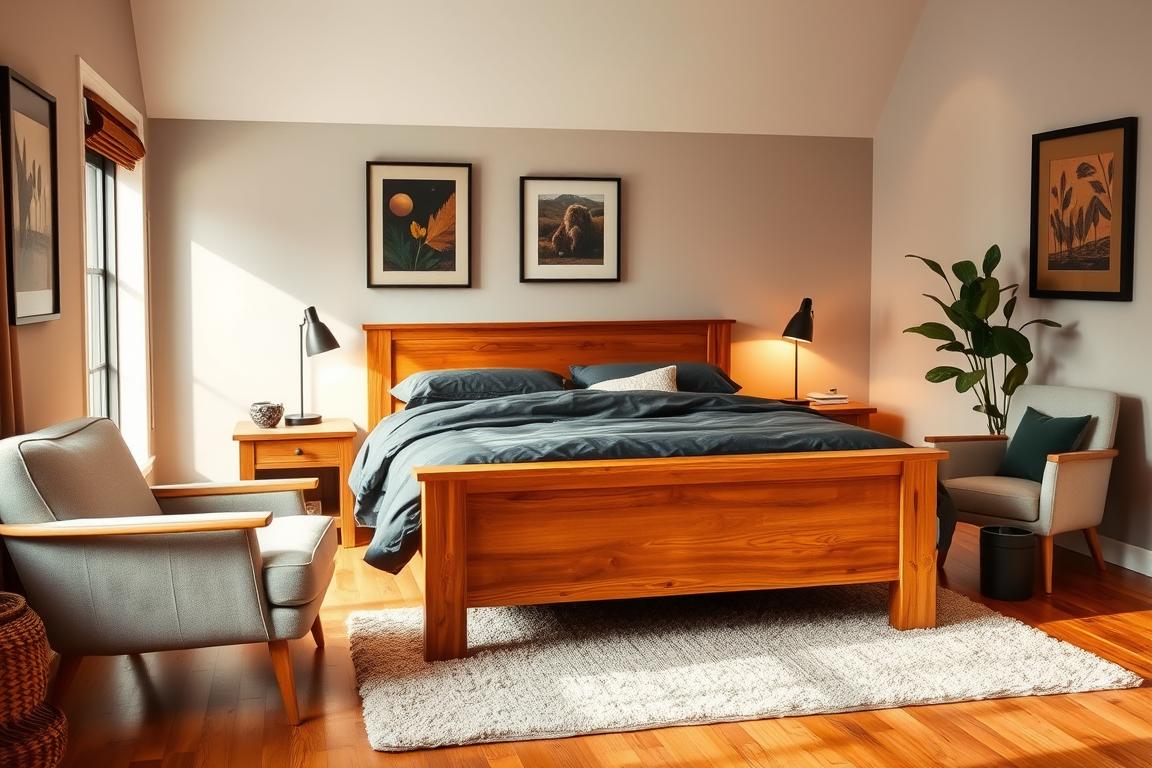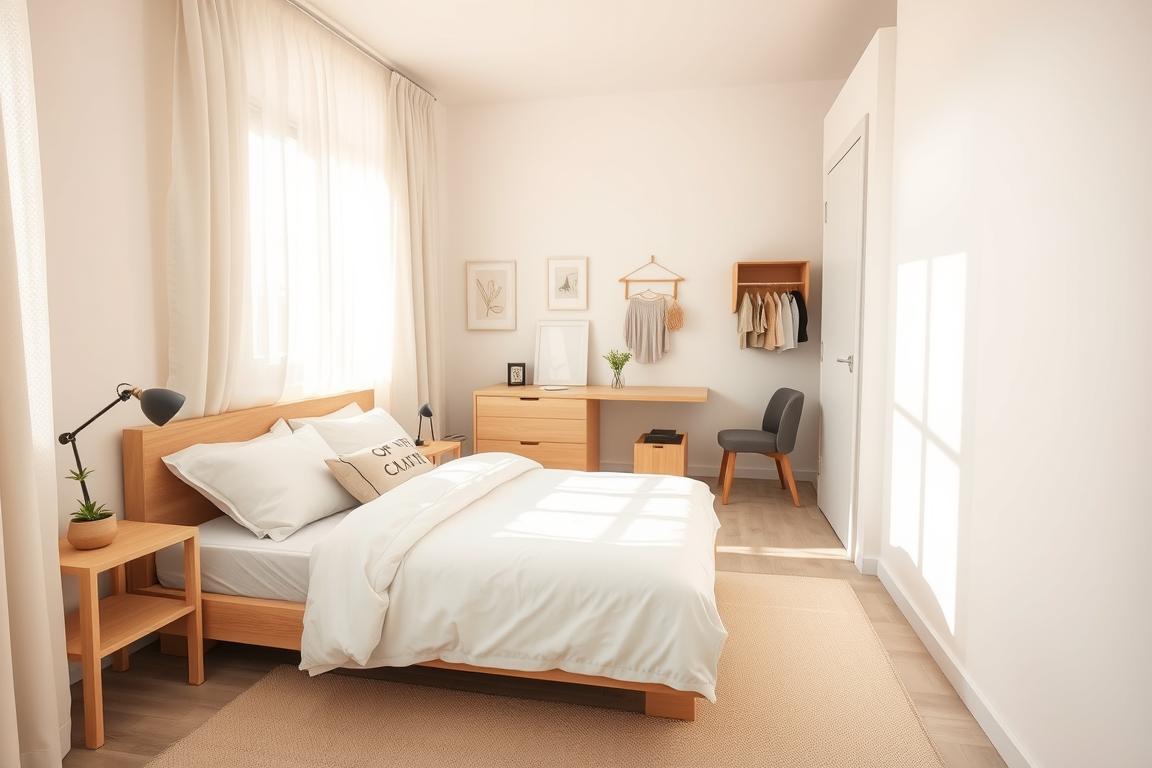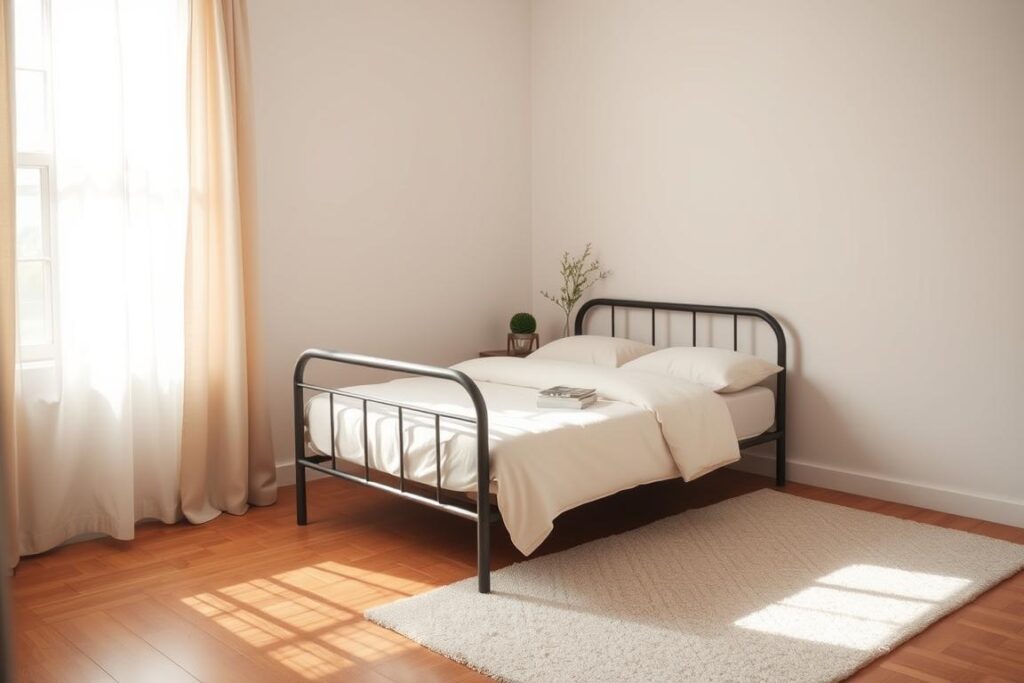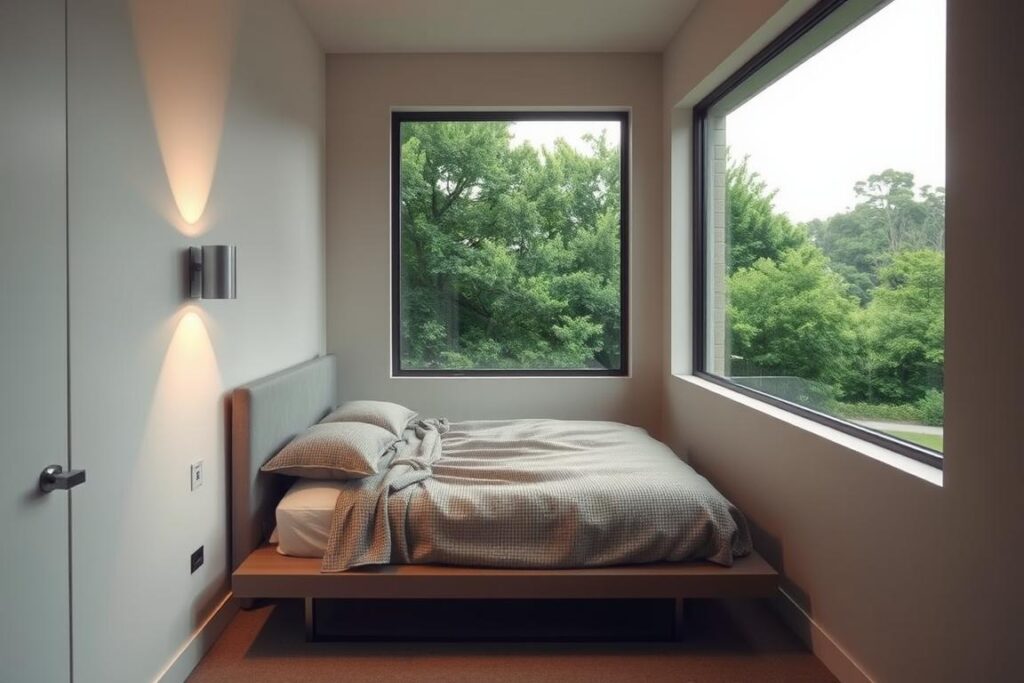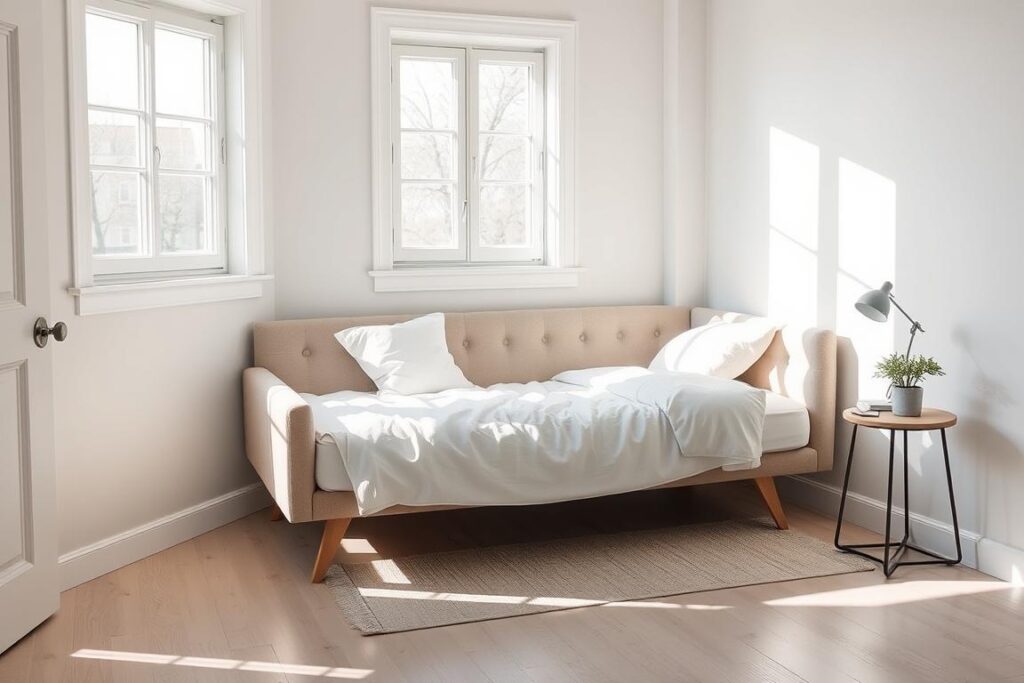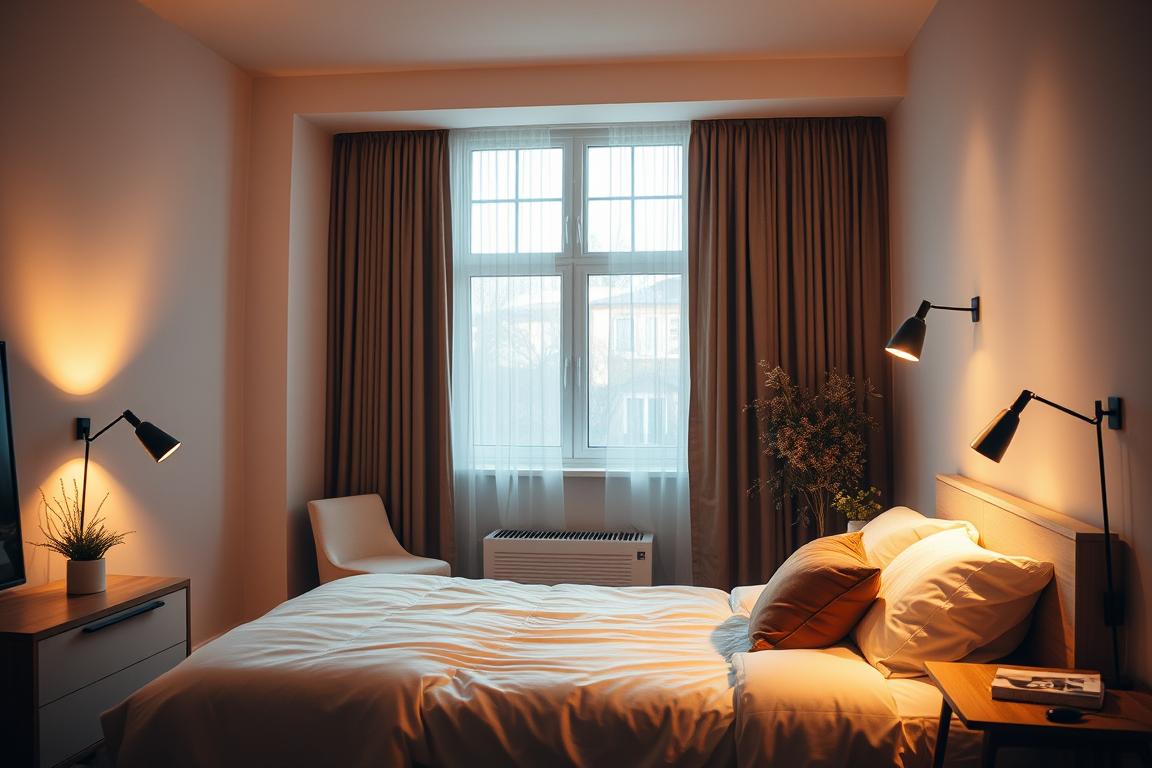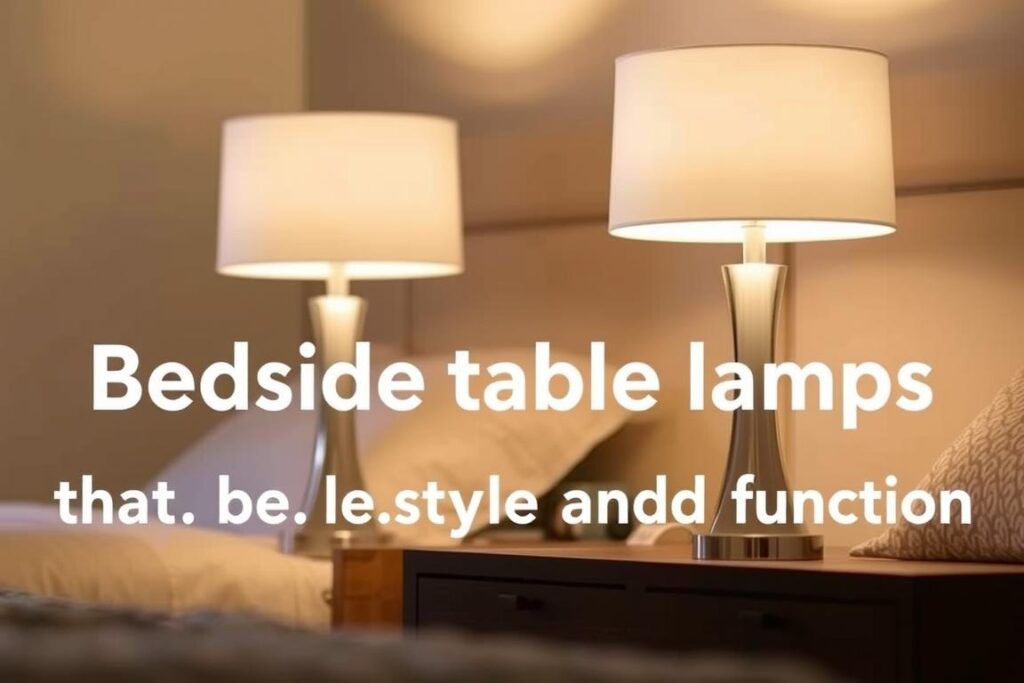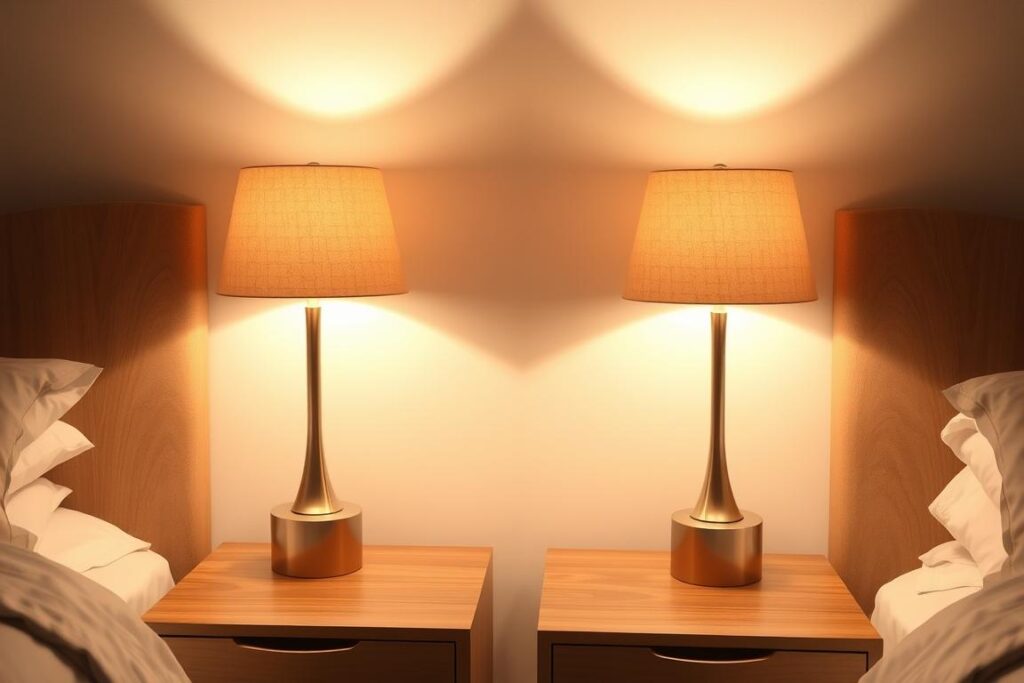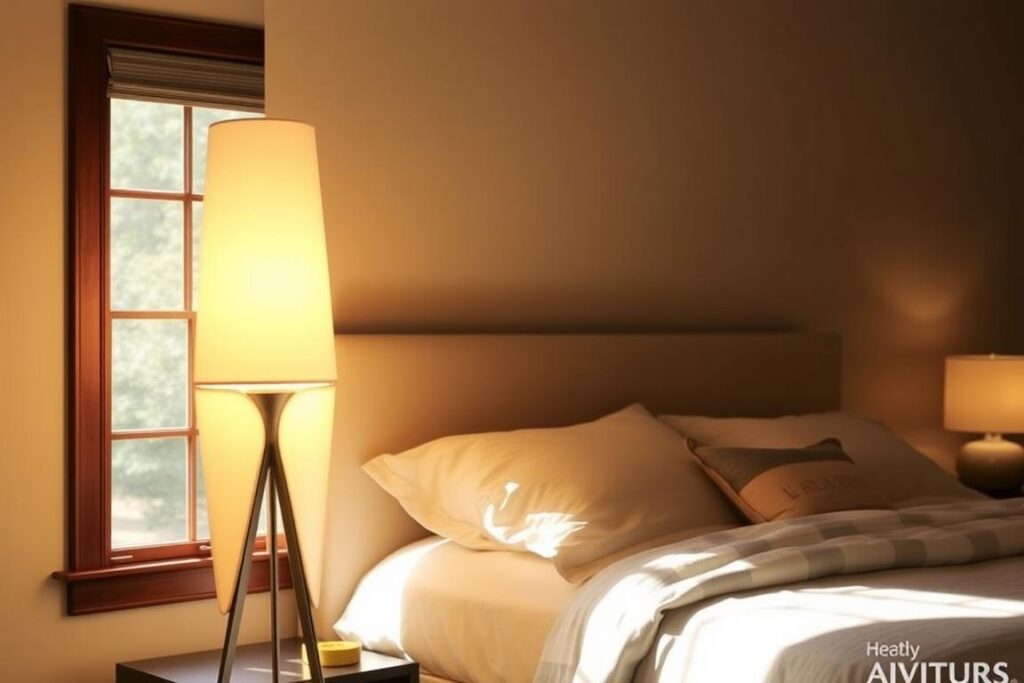Men’s Bedroom Ideas on a Budget
Updated: August 30, 2025
Men’s Bedroom Ideas on a Budget can look high-end with zero-cost edits, warm lighting, and a tight color palette. Start by letting light flow, clearing clutter, and matching a few key textiles so every dollar you spend works harder.
Key Takeaways
- Decluttering and rearranging give the fastest visual win.
- Matching textiles plus one lumbar pillow creates instant polish.
- Framed prints and mirrors make small rooms feel bigger and tidier.
- Thrifting and marketplace finds add character for less.
- For the best results, keep to one tight palette—these men’s bedroom ideas on a budget shine when colors are cohesive.
According to the CDC, a calm, dim environment helps wind-down before bed—so lighting and clutter control pull double duty: better looks and better sleep. If you’re shopping for safer materials, check recognized bedding certifications to avoid questionable foams.
Define your masculine style and color scheme before you spend a dollar
Before you buy anything, lock down a clear palette so every choice feels intentional.
Choose a moody neutral base like gray, black, white, or brown. These tones make future purchases easier and keep the room cohesive.
Pick cool or warm accents
For cooler direction, layer navy or forest green in bedding, artwork, or one painted wall for depth without overwhelm. Warm choices use walnut wood and mustard touches—throws, pillows, or lamp bases add richness.
Make the scheme practical
- Repeat your accent at least three times—art, throw, lamp—to feel intentional.
- Sample paint cards at different times; Sherwin-Williams “Mindful Gray” is a reliable neutral.
- Echo finishes: brushed brass with walnut; matte black or nickel with navy.
- Use this formula as a shopping checklist: Base neutral + Accent + Metallic.
Want deeper color help? See our guide on masculine bedroom color schemes.
Start free: rearrange, declutter, and repurpose for instant impact
A quick rearrange and ruthless edit of clutter will change how you use and enjoy your space.
Rearrange furniture to maximize light and space
Pull furniture off walls and test a few layouts. Keep windows clear so natural light flows. Shifting the bed or desk a few feet can make the room feel larger and more functional.
Declutter surfaces and walls for a clean, organized look
Edit ruthlessly: clear the floor, empty nightstands, and keep only what you use daily. Take down a wall of posters and save the best pieces as framed prints for a neater, elevated look.
Repurpose what you have
- Move furniture: clear window lines and test layouts — more light, feels bigger.
- Declutter: limit items on the nightstand; reframe best art — tidier, mature look.
- Repurpose: ladder or stacked crates as a bedside table; an old suitcase for storage and a tabletop.
- Finish: clean windows, hide cables with clips, add baskets, and create a small tray for nightly essentials.
For layout help, try our tips on small bedroom layouts.
High-impact paint moves on a tight budget
A single paint move can change the mood faster than any new furniture.
Feature wall vs. full-room: when to pick each
- Feature wall: cheaper, faster, and great for framing a focal point.
- Full-room: pricier but creates a calm, cohesive envelope that feels intentional.
- DIY concrete effect: add texture and a rugged edge on one wall.
- Removable textured wallpaper: rent-safe texture and easy to change.
- Sample paint at different times; light shifts color dramatically.
- Balance darker walls with lighter bedding and a mirror opposite the window.
- Use higher sheen behind nightstands for easy cleaning; choose matte elsewhere to hide flaws.
Bed and bedding upgrades that look designer without the price tag
Upgrade the sleep zone first — small changes here create the biggest visual return.
Choose structure and scale
Simple silhouettes—timber, charcoal upholstery, or black metal—read masculine and stay timeless. If your frame is fine, attach a statement headboard. It often costs far less than replacing the full bed.
Match textiles for a hotel-like finish
Match sheets, duvet, and shams for a cohesive setup. Keep pillows minimal: one lumbar cushion and a textured throw are enough.
- Try ticking stripes or a subtle geometric weave for interest without clutter.
- Choose durable cotton or percale; it softens with washes and stays crisp.
- Raise a low mattress with slim risers or a platform for better proportions.
- Keep a small tray at the bedside for phone and watch to preserve a clean style.
Looking for a headboard on the cheap? Check our picks for best budget headboards.
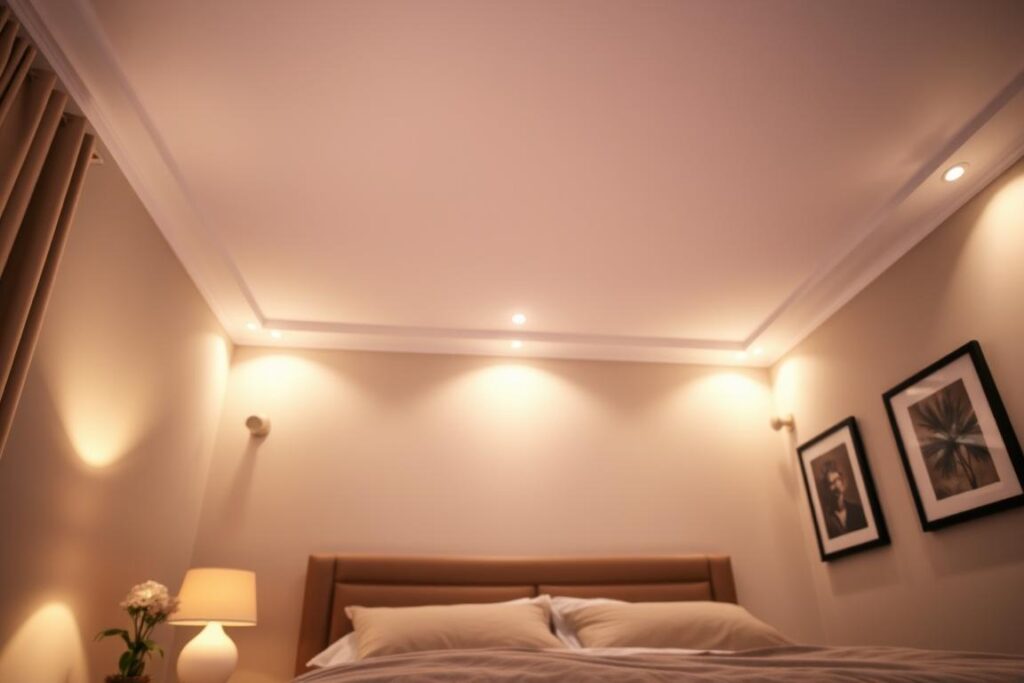
Wall art, murals, and mirrors that add interest and scale
A single bold piece can change the tone of your room and give it clear personality.
Go bold with moody pieces
Anchor the bed wall with one statement print in darker tones or a striking black-and-white photo. Thin black frames with wide white mats make affordable prints read gallery-level.
Use mirrors to enlarge small rooms
Hang mirrors where they catch daylight—opposite or adjacent to windows—to bounce light and make the room feel bigger. For peel-and-stick murals, measure accurately and follow vertical hanging instructions for clean adhesion.
- Level frames; consistent spacing reads intentional.
- Repeat a color from the artwork in a throw or lamp to tie the composition back to bedding and furniture.
Layered lighting: ambient, task, and accent on a budget
Layered light is the single upgrade that makes evenings feel designed.
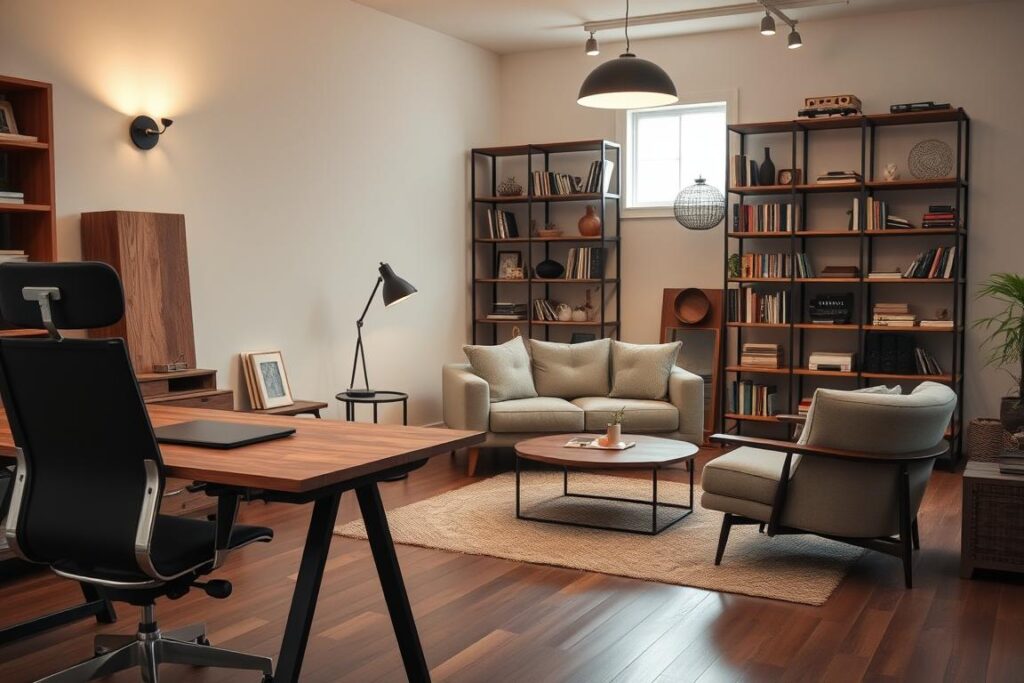
Start with warm bulbs. Choose 2700–3000K to soften color and flatter paint and bedding. Replace harsh overhead bulbs with dimmable options so you control brightness for reading or relaxing.
Warm bulbs, bedside lamps, and wall sconces
Add two bedside lamps or plug-in sconces to balance light and keep the room symmetrical. If you rent, plug-in options look hardwired without the wiring work.
LED strips for ambiance
Tuck LED strips under the frame or behind the headboard for a low, customizable accent glow. Use a floor lamp in a dark corner to lift overall ambient light, and put lamps on smart plugs to set wind-down scenes.
men’s bedroom ideas on a budget: quick wins and smart buys
Start with one grounding piece and build the rest around it for instant coherence.
Area rug, framed prints, and budget-friendly decor
Drop a neutral rug under the bed to anchor the space and tie colors together. Swap posters for framed digital prints and use budget frames for a gallery look. Keep surfaces minimal: one statement object per table.
Shop secondhand
Hunt for solid wood nightstands or a mid-century dresser on marketplace apps. Month-end listings often drop in price as sellers move.
- Large area rug: unifies palette and anchors bed.
- Framed prints: polished walls, easy to swap.
- Secondhand furniture: quality construction and unique look.
- Mirror and lighting: bounce light and add warmth.
Materials and textures that read masculine
Let texture do the heavy lifting: mix rugged surfaces with soft linens so your room feels grounded and comfortable.
Start with three materials. Designers often pair leather with walnut or oak wood and add concrete or metal details. Introduce concrete sparingly—try a small side table, tray, or planter for grit. Add brushed metallics in lamp bases or drawer pulls to lift the room.
- Layer textures: leather bench + wood nightstand + concrete planter + soft linen bedding.
- Pick one dominant wood tone and repeat it to avoid a mismatched feel.
- Use metal details (matte black, nickel, or brass) as a repeated accent.
- Keep fabrics simple—linen, cotton, or wool throws—and limit high-gloss finishes.
Patterns that work: graphic, geometric, and tailored
A single strong pattern can anchor your whole scheme if everything else stays quiet.
Choose one hero pattern—a geometric duvet or ticking-stripe coverlet—and keep most textiles solid. Repeat that pattern in small doses: a pillow, throw, or curtain banding is enough to tie the room together without crowding the space.
- Pair a large-scale pattern on the bed with a finer weave on the throw.
- Use a geometric rug to put pattern underfoot while keeping the bedscape calm.
- Keep the palette tight so patterns feel cohesive, not chaotic.
For more practical inspiration, see cool guys bedroom ideas.
Plants over flowers: instant life and color
A single low-maintenance plant can change your space overnight.
Keep greenery simple and purposeful. Try snake plant or ZZ where light is low, or a small cactus on the nightstand for texture without effort.
- Use one larger floor plant to soften a corner and lift the room vertically.
- Propagate pothos or monstera cuttings from friends to expand affordably.
- Choose matte black, concrete, or terracotta planters to match your palette.
- If you travel, high-quality faux pieces give green with zero upkeep.
Smart storage and closet organization for a tidy space
A tidy closet changes how the whole room reads and speeds up your routine.
Keep clutter out of sight. Use low-profile under-bed bins for shoes, seasonal clothes, and extra bedding so floors stay clear. Matching baskets on open shelves make storage look neat instead of chaotic.
Hidden bins and under-bed solutions
- Opt for low-profile under-bed bins to hide off-season items.
- Use matching baskets so open storage feels uniform.
- Label bins discreetly to find things fast.
Modular closet add-ons
Add drawer dividers for socks and accessories, hooks on the door for bags and hats, and a small tray as a valet spot for keys and your watch.
Furniture picks: industrial and mid-century vibes
Balance grit with refinement to give your room instant character.
Industrial pieces—visible wood grain, metal legs, and pipe details—add rugged texture that pairs with moody paint and leather accents. Mid-century silhouettes—tapered legs and warm walnut—bring a timeless, tailored feel.
Scale and function for small rooms
- Choose open-base pieces to expose floor and make the room feel larger.
- Pick a petite round side table instead of a bulky nightstand in tight spaces.
- Match finishes: echo lighting hardware in drawer pulls for cohesion.
- Shop secondhand for solid wood you can refinish or update with new handles.
Tech essentials that look sleek and simplify life
Let thoughtful tech become part of the design—not the first thing you notice.
Pick compact smart speakers in neutral finishes so they blend with your palette. Use smart plugs for bedside lamps to automate wind-down light and wake routines, and hide charging stations to reduce cord clutter.
- Match tech with tactile materials—wood stands or leather trays—so it feels warmer.
- Hide power strips behind furniture and use cable sleeves for clean lines.
- Consider a low-profile soundbar if you stream video from bed.
- Set a single “goodnight” voice command to dim lights and start low-volume white noise.
Budget roadmaps: $100, $200, and $500
A tiered plan helps you target the highest-impact moves at any price point.
$100: paint, declutter, and DIY art
What to do: deep declutter, rearrange for light, and paint one accent wall to change mood fast. Make DIY art from magazine pages or printed downloads in cheap frames.
$200: add rugs, lamps, and mirrors
What to buy: a neutral rug to tie the palette, two bedside lamps with warm bulbs, and a tall mirror to bounce light and enlarge the space. Check marketplace apps for solid nightstands.
$500: upgrade headboard, textiles, and accent lighting
What moves the needle: install a statement headboard, buy matching sheets/duvet/shams, and add LED strips under the bed or behind the headboard for layered light.
FAQ
What’s the cheapest upgrade with the biggest impact?
Declutter, rearrange for light, and swap in warm, dimmable bulbs. Most rooms look better in one afternoon.
Is a feature wall or full-room paint better?
Feature walls cost less and add instant depth. Full-room paint feels calmer and more cohesive—choose based on how much change you want.
What size rug works under a queen bed?
Common picks are 6×9 or 8×10 depending on room width. Leave similar floor reveal on both sides.
How do I make budget bedding look designer?
Match sheets and duvet, add one lumbar pillow, and finish with a textured throw. Keep the palette tight.
Conclusion
Finish strong: lock in your palette, clear the clutter, and choose one focal piece to pull the room together. With focused men’s bedroom ideas on a budget, you’ll get a polished, masculine space without overspending. Start free, then add paint, lighting, a mirror, and one bold art piece. For more cozy, practical guides, visit Cozy Bed Quarters.
Related Reading
- Cozy Bed Quarters – Bedroom Lighting Ideas
- Cozy Bed Quarters – How to Choose the Right Rug Size
- Cozy Bed Quarters – Best Budget Headboards
- The Guardian – Bedding Buying Guide 2025
- People – Best Bamboo Sheets
- Architectural Digest – Duvet vs Comforter

